It is one of the great Wonders of the Ancient World, one of those places that if you can afford it, you should visit at least once in your life.
I'm talking about Petra, historic enclave of Jordan that I have had the opportunity to visit, and that surprises you live even more than what you can imagine seeing photos of its famous corners, especially, of the Tesoro.
Facing your trip to Jordan, you should know that it is possible hire an excursion with a guide in Spanish through the city of Petra, with several options depending on what you want to do in this magical city.
But if you are going to get to know him at your leisure, during the Petra's visit You will have many doubts and you will be anxious to know the secrets of its history.
All the information in detail
Curiosities and data on the History of Petra and its Treasure
Therefore, below we are going to tell you 7 curiosities and historical data about Petra and its Treasure.
Why Petra is called the Lost City
Petra is known as the Lost City because although its history dates back to the time of the Nabataeans, in the 7th century BC, in the Middle Ages was completely abandoned and was not “discovered” by Westerners until the beginning of the 19th century.
Specifically, it was the Swiss explorer Johann Ludwig Burckhardt who in 1812 got the local inhabitants to take him to see that lost City which was talked about.
An enthusiast of Arab culture, he previously converted to the Muslim religion and changed his name to Ibrahim Ibn Abd Allah, which allowed him to gain the confidence necessary to be led to Petra.
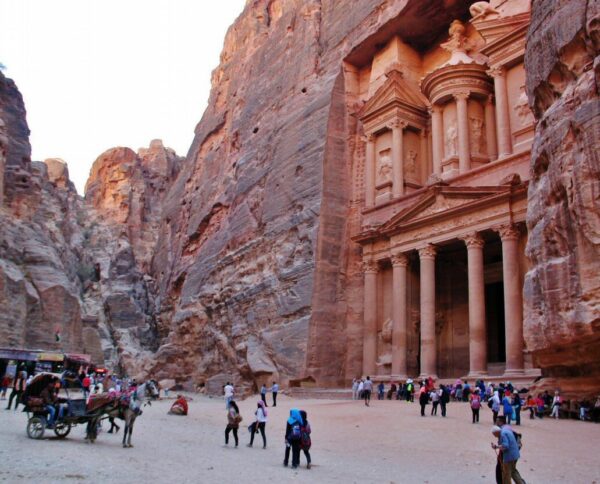
The Siq, gorge to reach Petra
The main reason that Petra became the Lost City is its special location in a valley surrounded by high rocky mountains whose entry is the deep gorge known as the Siq.
With a length of one and a half kilometers, the gorge has a minimum width of just over two meters in some of its sections.
For this reason it became a totally hidden and impregnable enclave.
Who were the Nabataeans?
Petra reached its maximum development when it was occupied by the nabataean civilization.
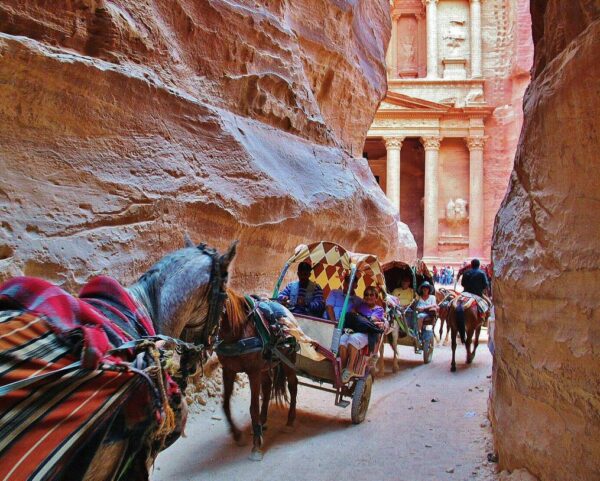
Butwho were the nabataeans?
He was a arab people which reached its maximum splendor between the 4th century BC and 1st century AD, which spread throughout the lands of Palestine, dedicating itself to trade.
A sample of this commercial spirit can be found in the sculptural reliefs what you can see in the aforementioned as, which They represent life-size camel caravans.
Petra, city of great Nabataean tombs
There were three functions fulfilled by the Petra city.
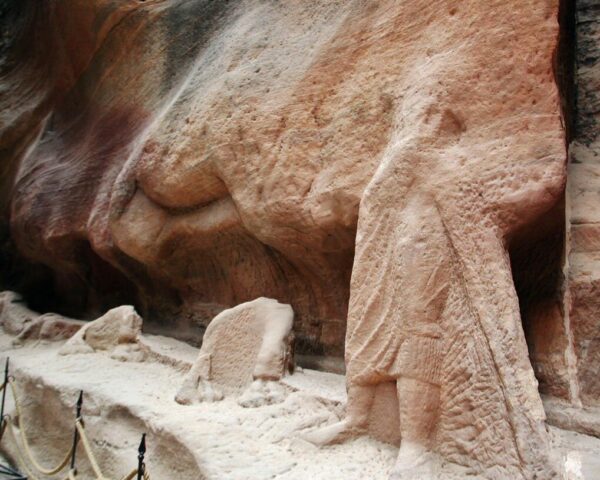
On the one hand, it was considered the city for tomorrow.
With a pagan religion with numerous gods, the former city of Petra is plagued with nabataean tombs, spaces excavated in the rock where the dead rested.
You will see them very simple, simple access holes to a cave, but also splendid, and the most famous of them, the image that you surely have on your retina, the one known as the Treasure of Petra.
On the other hand, Petra was a defensive enclave where they were hiding the nabataeans to defend themselves from attacks from other towns.
And on the other, Petra it was a great Commercial City, an essential stage on the caravan routes that traded products from India.
ORGANIZE your TRIP
- Don't forget your TRAVEL INSURANCE with a 5% discount
- Book the HOTEL for your trip
- RENT a CAR for your trip
- The best TOURS and EXCURSIONS in Spanish
- NO-LINE TICKETS for museums and monuments
- Best FREE TOURS around the world
- Book your TRANSFER from the airport
- eSIM card with INTERNET at the best price
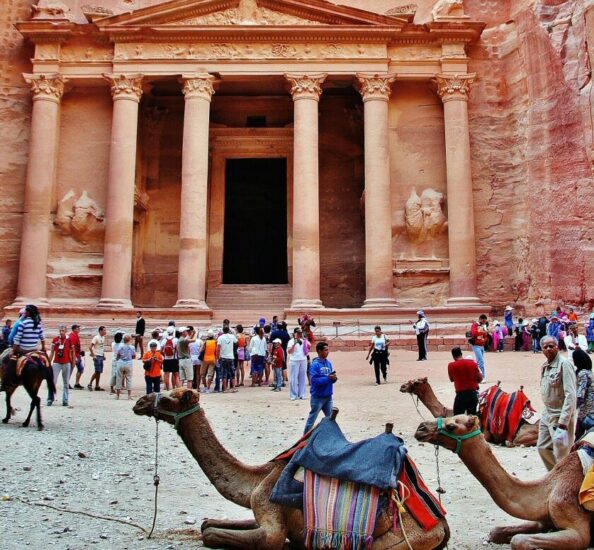
How the water got to Petra
One of the keys to Petra boom was water availability, always scarce in these lands of Middle East.
Due to its location between rocky mountains, and thanks to the construction of complex channel networks, riding a Petra They had enough water for their population.
But, on the other hand, the layout of the great gorge in history favored significant flooding by torrents of water.
In the last known one, a few decades ago, some tourists died, which caused some walls to be built to contain the arrival of water, which you will be able to see during your tour of the Siq.

Likewise, at the entrance to the Siq you will see a tunnel that also serves the function of diverting water.
When were the Romans in Petra?
Petra was conquered by the Romans, specifically, by the general Pompey in the year 63 BC, and although initially the Nabats They had a certain autonomy, after the death of the last Nabataean king in the year 106, it became a city controlled by the emperor Trajan.
Later it lost its strength as a commercial city as traditional routes were diverted with the appearance of new maritime routes.
Archaeological remains of the Roman presence you can see them now especially in the Way of the Columns and in the Petra Theater.
In the Byzantine period, in the 4th century, Petra joined the Eastern Roman Empire, already under the Christendom, which led to the construction of some churches.
Here you can sign up for a Petra Tour with guide in spanish, lasting 10 hours, during which you will discover the most notable corners of this enclave Heritage.
And if you need to reserve accommodation, here are the Top rated hotels in Petra and Wadi Musa
Why was Petra abandoned?
One of the great doubts that arise during the visit of this majestic enclave is What was the reason Petra was abandoned?.
In this regard, a key event was that in the year 17 there was an important earthquake, which caused a good part of the city's buildings to be destroyed.
And since it no longer had the commercial importance it had then, it was not rebuilt and little by little the city was abandoned.
In the later Middle AgesThere was a time when Petra was occupied by the crusader knights, until 1187 when they were defeated by Saladino.
Since then, Petra It was practically abandoned until the Swiss explorer rediscovered it in 1812.



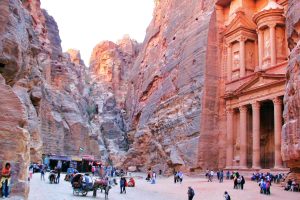









I visited Petra last week, I loved it, different from everything I had seen until now, it is worth it. The worst thing is the 870 pseudo steps to get to the monastery, which you reach after climbing for about 50 minutes. Petra is the best of Jordan.
You cannot enter the monastery or the treasury, the visit lasts about 10 hours and the entrance fee is very expensive, €75 if you sleep two days in hotels in Jordan or €130 if you don't.
If God gives me life and health I will go to Petra…
I visited it and it is impressive. Learn about its history. It is worth visiting even just once.
It's incredible, I had seen her in a couple of movies, Petra I think we should visit her at least once in our lives. But for me it is impossible because of the economic part, besides I have already lived half of my life so it is even more difficult that when I lived the other half I didn't go... if I didn't go to Disneyland which is closer to Petra it would be like a miracle go . I will continue dreaming, congratulations to those who can go, enjoy for me...
I have visited Petra and the entire tour impressed me, a city hidden for so many centuries... I think it is better to go to experience its sensation.
I watched a 17 minute documentary about Petra, it is a wonder of humanity built more or less 10 centuries ago with rudimentary technology. I won't be able to visit her but I enjoy watching and reading about Petra. It is beautiful and beautiful. Thanks to UNESCO. UN for declaring it a tangible cultural heritage of humanity and including it among the 7 new wonders.
Beautiful place to know and learn about everything that was the Nabataean kingdom.
What type of rock were the caves built on?